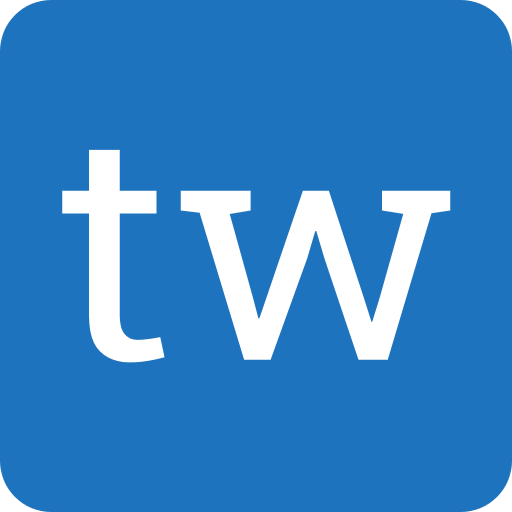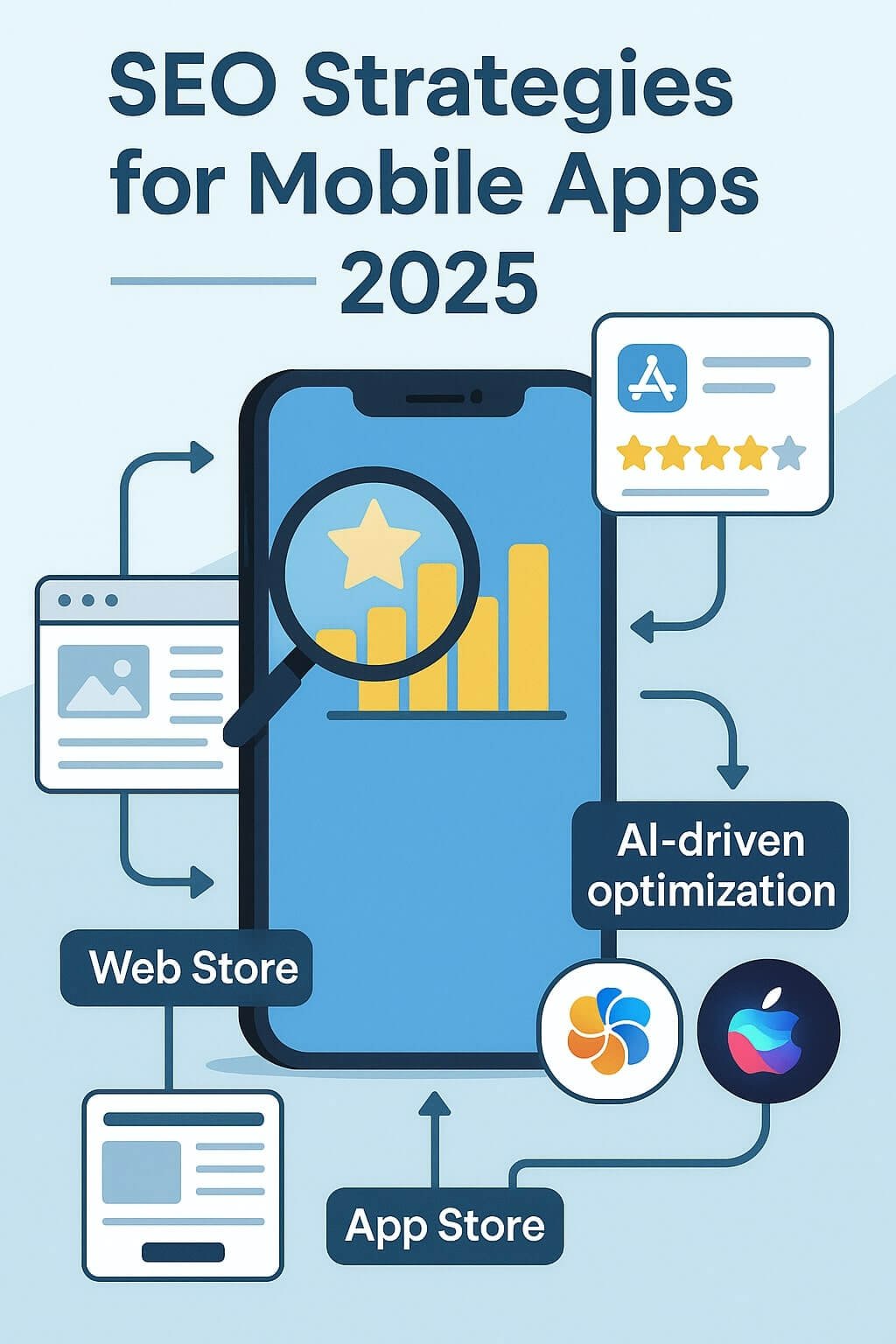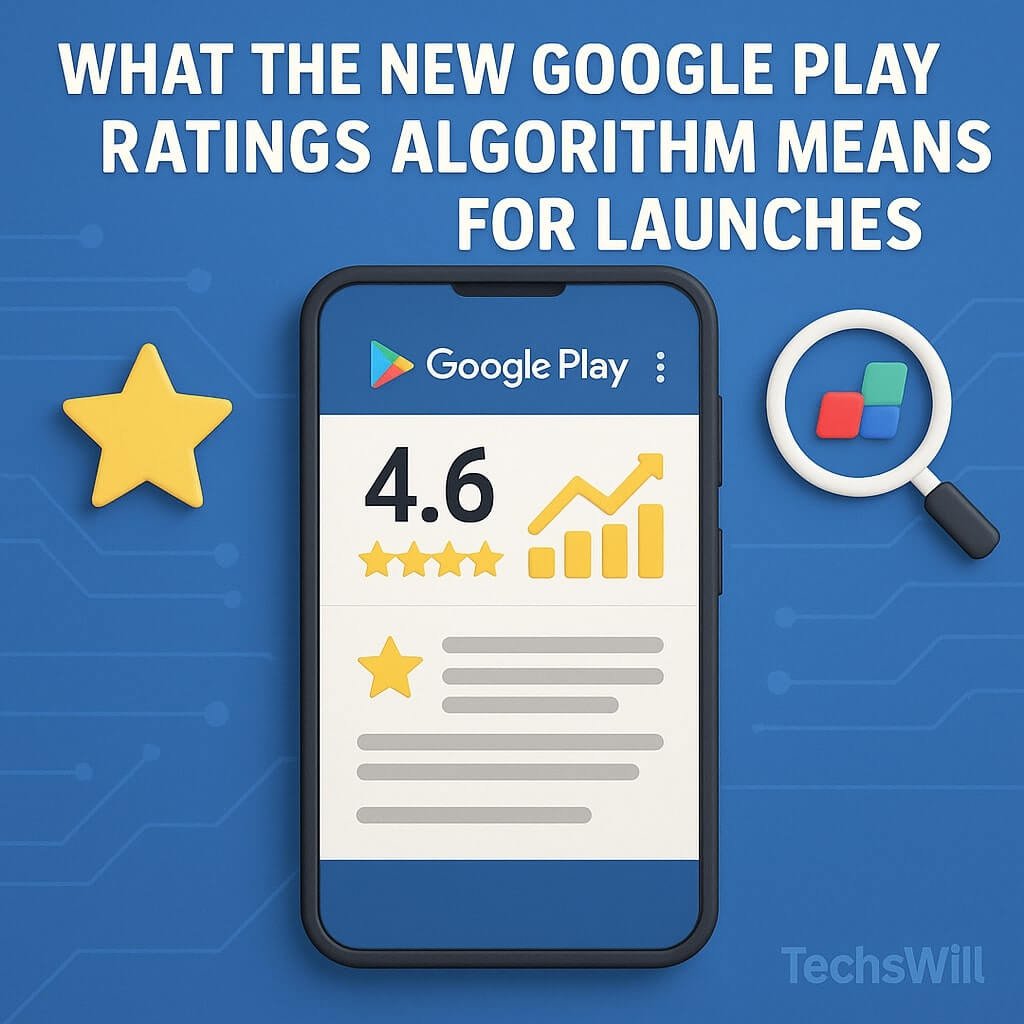Mobile app visibility isn’t just about App Store keywords anymore. In 2025, top-ranking apps use a mix of ASO, AI-focused content, web SEO, and multi-platform strategies to drive downloads and user engagement.
This guide shares the top SEO strategies developers, marketers, and founders can use to get their app discovered — in App Stores, on the web, and even inside AI assistants like Gemini, Siri, and Alexa.
🔍 App Store Optimization (ASO) Best Practices
1. Front-load Your Title + Subtitle
- Use high-volume phrases early in your App Name (e.g., “Habit Tracker – Focus Timer”)
- Google Play now parses app descriptions in Gemini — not just title
2. AI-Friendly Description Structure
- Use bullet points to highlight features
- Describe in natural language: “This app helps you…”
- Use headings to guide parsing for Gemini Search
3. Reviews = Ranking Power
- Trigger review prompts after 3+ sessions
- Use
SKStoreReviewController.requestReview()in Swift - On Android, use Play Core’s in-app review prompt
🌐 Web SEO + Landing Pages
4. Build an Optimized App Website
- Use a fast-loading landing page with screenshots
- Add structured schema:
SoftwareApplication,BreadcrumbList,Product - Embed Google Play + App Store links with tracking params
5. Blog Content That Answers Questions
- “How to build healthy habits in 2025?” → link to app
- “Best Pomodoro timers for ADHD” → compare and embed yours
6. Social & UGC Signals
- Get listed on Reddit tools lists, IndieHackers, and AI tool blogs
- Submit to Product Hunt with updated tags
🤖 AI Search & Voice Assistant Optimization
7. Gemini Assistant Snippets
- Use headings like “How this app helps” or “Top benefits”
- LLMs parse your store listing and website for answers
- Structure your FAQ in markdown or JSON
8. Siri Suggestions
- Register NSUserActivity intents with relevant actions
- Use voice labels, action labels, and donate intents
🎯 Bonus: In-App UX that Drives SEO
9. Trigger Word-of-Mouth Sharing
- Offer social-share rewards after first success milestone
- Prompt users to “share how this helped you” with ready-made snippets
10. Ask for Reviews Using UX Timing
- Right after a completed task or goal → Ask for a rating
- Don’t interrupt — offer dismissable toast/banner instead
📈 Analytics Setup for SEO Success
- Track referral source in Firebase or Mixpanel
- Tag app link clicks with UTM codes
- Use App Store Connect + Google Play Console reports weekly
✅ Summary
In 2025, app discoverability happens across App Stores, AI assistants, blog content, and social shares. Use these strategies to optimize every entry point. The best apps don’t just rank — they stay relevant by answering user questions everywhere.


